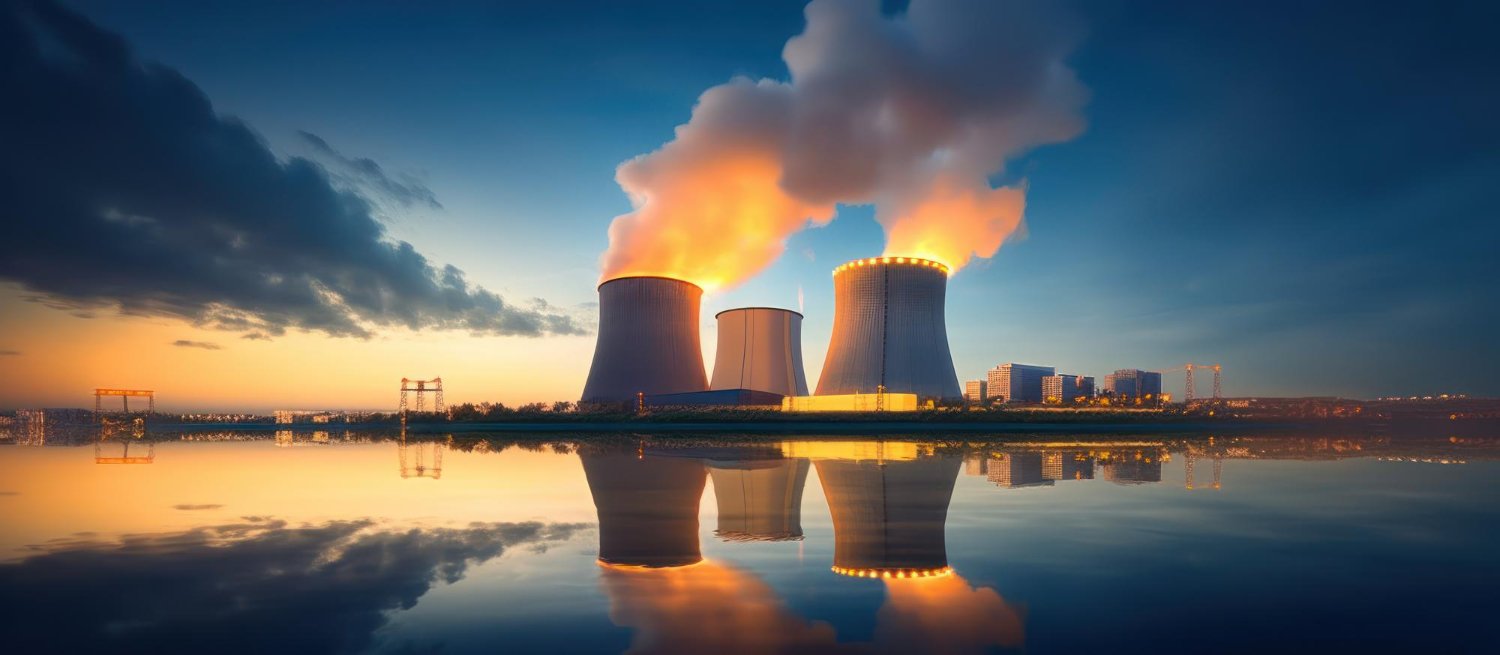From Turbines to Safety: How Gearboxes Support Nuclear Power Plant Operations
Author Sushmita Das on October 4, 2024
Often, many of us wonder if nuclear power plants use gearboxes, to which the answer is YES; nuclear power plants do use gearboxes in certain applications. Gearboxes are the most important components where variable speeds are required to increase the efficiency of power transfer between the turbine and generators. Although nuclear plants mostly rely on steam turbines with direct drives to generate electricity, there are several auxiliary systems where gearboxes are essential.
Understanding the Role of Gearboxes in Nuclear Power Plants
Nuclear power plants are driven by a steam turbine that converts thermal energy into mechanical energy, which thereby is turned into electricity by a generator. The turbines in nuclear plants operate at high speeds, often with direct coupling to generators for maximum efficiency. But, gearboxes are still integral to several critical systems mentioned as follows:
- Pumps and Fans: Nuclear power plants have numerous cooling and feedwater pumps. Many of these pumps are powered by motors, which may run at a speed different from the required pump speed. Gearboxes help match these speeds, ensuring efficient operation. For example, cooling tower fans, which regulate the temperature of water circulating in the plant, often use gearboxes to control the fan speed.
- Auxiliary Power Generation: Some nuclear power plants use gearboxes in auxiliary power systems, such as emergency diesel generators. These gearboxes are used to optimise the efficiency of the emergency generator units. They ensure that, in the event of a power outage, the backup generators supply the requisite electricity to maintain cooling and other critical functions.
- Turbine Gearboxes in Older Plants: While modern nuclear power plants primarily use direct-drive turbines, older plants may have gearboxes as part of the turbine-generator system. These gearboxes reduce turbine speed to match generator requirements, particularly in smaller plants or auxiliary power generation systems.
- Remote Manipulators and Maintenance Equipment: Gearboxes are also used in remote-controlled devices for handling radioactive material or performing maintenance tasks in radioactive zones. These devices require accurate movements, and gearboxes help translate fast motor speeds into slow, controlled motions.
Some Industrial Examples of Gearboxes in Nuclear Power Plants
There are several industrial gear manufacturers that have provided solutions for nuclear power plants. Some examples include the following:
- Flender (Siemens Energy): Flender has supplied heavy-duty gear units for the nuclear industry for decades. Their gearboxes are commonly used in cooling tower fans and pumps in nuclear power plants. Flender’s planetary gearboxes provide excellent reliability, ensuring smooth operation in critical applications like emergency power systems and auxiliary pumps.
- Nuttall Gear: Specialising in custom gear drives, Nuttall Gear provides nuclear-grade gearboxes for safety-related applications. Their gearboxes are used in reactor coolant pumps, which circulate coolant to maintain a safe operating temperature. These pumps require high reliability due to the critical nature of their functions.
- David Brown Santasalo: Known for providing rugged gearboxes for harsh environments, David Brown Santasalo supplies gearbox solutions for steam and water pumping systems in nuclear plants. Their high-performance gearboxes ensure the continuous operation of essential systems even in extreme conditions.
- REINTJES GmbH: This German company offers gearbox solutions for auxiliary diesel generators in nuclear power plants. Their gearboxes ensure the efficient functioning of emergency backup systems, vital for plant safety during outages or shutdowns.
Challenges and Requirements for Nuclear Gearboxes
Due to the safety-critical nature of nuclear power plants, the gearboxes used in these applications must meet stringent regulations:
- High Reliability: Gearboxes in nuclear plants must be incredibly reliable, often designed with redundancies and backup systems to ensure failure-free operation over long periods.
- Seismic Considerations: Nuclear power plants must be able to withstand earthquakes, and gearboxes are no exception. They must be designed to function properly even in seismic events, maintaining critical systems like emergency cooling pumps.
- Radiation Resistance: Gearboxes used in environments exposed to radiation, such as reactor containment areas, need to be designed to withstand radiation exposure without degradation.
- Maintenance and Durability: Maintenance access in nuclear plants is limited, especially in high-radiation zones. Therefore, gearboxes must be robust and designed for long-term operation with minimal maintenance.
Final Thoughts
Gearboxes, though not the primary drive mechanism for turbine generators in nuclear power plants, play a significant role in various auxiliary systems.
From pumps and fans to emergency generators and remote manipulators, gearboxes contribute to the smooth and safe operation of nuclear power plants.
Companies like Flender, Nuttall Gear, and David Brown Santasalo have been pivotal in supplying these specialised gearboxes, ensuring that nuclear facilities can operate safely and efficiently, even under challenging conditions.
By comprehending the role and significance of gearboxes in nuclear power plants, we can appreciate the complex systems that work together to produce clean, reliable energy while prioritising safety and durability.
-
Sushmita Das is an accomplished technical
writer. Holding a degree in Electrical Instrumentation and Control System Engineering,
she brings a wealth of technical expertise to
her writing
View all posts
Post Views: 289
